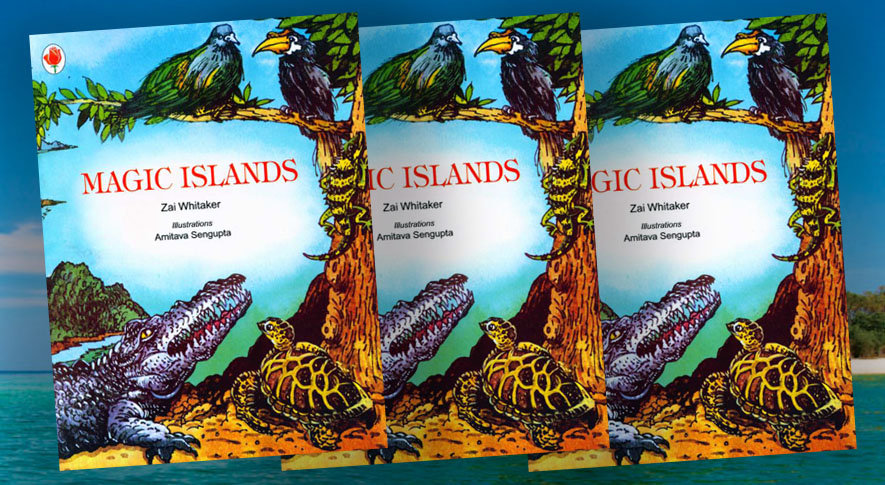By Zubair Ahmed
Lack of knowledge about their own territory has been a bane for the Islanders since Independence. The school curriculum has vastly ignored the life and biodiversity of this Island territory. Our children are forced to study everything from general knowledge, geography, history and social sciences of the whole world except the Islands. Despite our Islands gifted with mountains, sea, beaches, forests, plains and even tribes not found anywhere else, it’s a paradox that all these are not taught in our schools.

Reading RC Mazumdar or MV Portman to know about the Islands is not everyone’s cup of tea. Those interested in the colonial history or the tribes might have heard the names, which does not excite anyone otherwise.As a fillip, here is a journey to explore some interesting facts and ideas about our Magic Islands – Andaman and Nicobar Archipelago with Zai Whitaker, grand niece of Salim Ali, who has authored some great gems like the Andamans Boy, Kali and The Rat Snake and The Rumbling Island.
Magic Island, authored by Zai Whitaker and published by National Book Trust covers everything from the history, geography and the wonderful life in our archipelago, a must read for every Islander and mainlander, irrespective of age, interested to know everything about the archipelago.
Zai Whitaker’s relationship with the Islands started almost 30 years ago. The book is the result of her encounter with the Islanders who knew very little about the history of their home. There were very few books about the Islands except the old reports written by British officers before India became independent. Those were rather depressing all about the naked savages in the jungles and the punishment of thousands of prisoners. She found little about the unique cultures and ecosystems, and absolutely nothing for children.
The book tells us how blessed we Islanders are with the unlimited natural wealth in our backyard with lovely views and landscapes of forest, open sky, ocean, Islands and in fact all the things that a millionaire craves to have.
Zai opens our minds towards the world of insects, birds, plants, reptiles, amphibians and mammals and the precious undisturbed rainforests with the abundant biodiversity. It illustrates the four-layer ecosystem that we have in the Islands – rainforest, mangrove, beach and reef.
From the term “junglees” used by the so-called “civilized” people, she redefines the indigenous tribes as geniuses. The story of Jarawas and other tribes including the Nicobarese are told in a very fascinating manner. How an Andamanese woman Topsy had helped the British to tame the tribes is one exciting tale.
The history of the Islands with focus on the pirates and pioneers, who reached the shores for different reasons and the Kalapani days are vividly portrayed in the book, beautifully illustrated by Amitava Sengupta.
The chapter on endemic and exotic species in the Islands explains why Cheetal and Mynah are bad for the Islands and the need to protect the Nicobari Megapode and Narcondum Hornbills.
The book also draws our attention towards the increasing population and decreasing resources, and the importance of sustainable and environment-friendly approach in all developmental activities.
In fact this simple and lucid book is the answer to the long-felt need for a comprehensive textbook for our children, who have nothing to rely upon to know about their Islands. This is an apt book, which can be introduced as a textbook in our schools, which surely will generate curiosity and interest among the children to know more about the magic Islands.